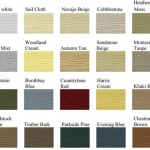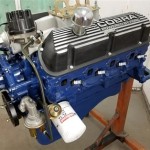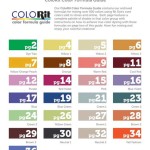High Heat Paint Colors: A Comprehensive Guide
When it comes to painting surfaces exposed to high temperatures, standard paint simply won't do. The intense heat can cause traditional paints to crack, peel, fade, and even release harmful fumes. That's where high heat paint comes in. This specialized coating is designed to withstand extreme temperatures, making it ideal for a variety of applications.
High heat paint, often referred to as heat-resistant paint, is formulated with specialized resins and pigments that can endure high temperatures without degrading. These paints offer a range of benefits, including:
- Heat Resistance: They can tolerate continuous exposure to temperatures well above the limitations of standard paints.
- Durability: High heat paints are designed to withstand the rigors of high-temperature environments, resisting cracking, peeling, and fading.
- Protection: They often provide a protective barrier against corrosion, rust, and other forms of deterioration.
- Aesthetic Appeal: High heat paints are available in various colors, allowing for both functional and aesthetically pleasing finishes.
Understanding High Heat Paint Ratings
The effectiveness of high heat paint is directly related to its temperature rating. This rating indicates the maximum temperature the paint can withstand without compromising its integrity. The ratings are typically expressed in degrees Fahrenheit or Celsius, and they vary depending on the specific type and formulation of the paint.
It's crucial to understand the temperature ratings of high heat paints to ensure you choose the right product for your particular application. For example, a paint rated for 500°F will be unsuitable for surfaces that reach 600°F. When selecting high heat paint, always verify its temperature rating and ensure it exceeds the anticipated operating temperature of the surface you intend to paint.
Key Types of High Heat Paint
High heat paints are available in various formulations, each tailored for specific applications and temperature ranges. Here are some common types:
1. Aluminum Paint
Aluminum paint is a popular choice for high-temperature applications due to its excellent heat resistance, thermal conductivity, and reflective properties. The aluminum particles in the paint reflect heat, helping to keep the underlying surface cooler. Aluminum paint is often used on exhaust manifolds, engine blocks, and other automotive parts.
2. Ceramic Paint
Ceramic paint is known for its impressive high-temperature resistance, often exceeding the capabilities of aluminum paint. It's a good choice for applications requiring exceptional heat resistance and durability, such as furnaces, kilns, and industrial equipment.
3. Silicone Paint
Silicone paint offers good heat resistance and flexibility, making it suitable for applications where the substrate may experience thermal expansion and contraction. It's commonly used on chimneys, fireplaces, and heating systems.
4. Epoxy Paint
Epoxy paints provide a robust and durable coating with excellent chemical resistance and adhesion. While they might not have the highest temperature ratings, they are often used in combination with other types of high heat paints to provide added protection.
Choosing the Right High Heat Paint
Selecting the correct high heat paint requires considering the specific application, temperature requirements, and environmental conditions. Here's a step-by-step guide to choosing the right product:
- Determine the Maximum Operating Temperature: Identify the highest temperature the surface will be exposed to on a regular basis.
- Consider Environmental Factors: Evaluate the specific conditions the paint will encounter, such as moisture, chemicals, and UV exposure.
- Select the Appropriate Paint Type: Based on the temperature requirements and environmental factors, choose the paint type that best suits your needs.
- Verify Compatibility: Ensure the paint is compatible with the substrate material.
- Read Product Instructions: Carefully review the manufacturer's instructions for proper preparation, application, and drying times.
By following these guidelines, you can ensure you choose the right high heat paint for your specific application and obtain the desired performance and lifespan.
Tips for Applying High Heat Paint
Proper application is crucial to ensure the effectiveness and durability of high heat paint. Here are some essential tips:
- Prepare the Surface:Thoroughly clean the surface to remove dirt, grease, rust, and any previous coatings.
- Prime if Necessary: Some paints require a primer compatible with high heat. Refer to the manufacturer's instructions.
- Apply Thin Coats: Apply multiple thin coats instead of one thick coat to allow for proper drying and ensure a smooth finish.
- Allow for Sufficient Drying Time: Follow the manufacturer's drying recommendations for each coat.
- Cure Before Use: Many high heat paints require a curing period to reach their full performance potential.
By following these tips, you can ensure a successful paint application that will provide the desired protection and durability in high-temperature environments.

High Heat Spray Paint Rust Oleum

High Heat Spray Paint Rust Oleum

High Heat Spray Paint Rust Oleum

Spray Painting Tips Tricks Everything You Need To Know

Paint Sheens Sheen Guide Painting Shiplap

Types Of Paint A Guide To Finishes And Surfaces

The Ultimate Guide To Choosing White Paint Colours Kylie M Interiors

The Best Benjamin Moore Dining Room Paint Colors

Top Car Paint Brands Enhance Your S Appearance With High Quality Paints Sybon Professional Manufacturer In China

Vht Engine Enamel High Heat Coating
Related Posts








